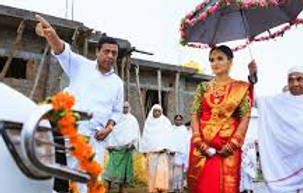top of page
Anchor 1
Nilgiris District
The Nilgiris (Blue Mountains), are part of the Western Ghats mountain range and run across the Southern Indian states of Tamil Nadu, Karnataka and Kerala.
The British found the gentle undulating slopes ideal for growing tea and the pleasant climate in the hills made Ooty the natural choice of residence in the scorching summer months. In 1827, Ooty was declared the summer capital of Madras presidency. In 1899 the Nilgiris Mountain Railway was completed to ease the journey to the hills and back. It still remains a tourist attraction and a journey through the tea gardens at its gentle pace is a must for every traveller with an eye for beauty.
Rolling grasslands, dense shoals, waterfalls, streams, lakes, vast expanse of tea plantations, interspersed with vegetable gardens, spectacular view points, an amazing variety of flora and fauna, fabulous trekking trails, innumerable heritage sites, spell binding sunrises and sunsets, magical light, pollution free atmosphere, mist, clouds, fog, star studded skies, serenity etc. Today, the Nilgiris remain a major centre for tea production and tourism. The gentle rolling hills, so reminiscent of the Downs of England, are a sea of green tea bushes, dotted with the red of poinsettias in the winter and the lilac of jacaranda in the summer.
About Badagas
Badaga is one of the unique communities which has its own rich set of traditions and customs. Badaga community is wide spread in the villages of Ootacamund.(called as Ooty)
Badaga houses are fascinating and traditional buildings. The houses portray the richness of the culture and the heart of the people. Their hospitality is just amazing. Among the wide spread green carpet, the houses bloom like tiny huts and little cottages. As there are more than three hundred odd hattis (villages) in Ooty, every village consists of at least hundred houses.
Hethai Amman is the goddess of the Badaga people. There are nine goddesses in Hethai. Kada Hethai and kada Aiya are some of the names of Hethai gods. Hethai festival is a major festival and is celebrated in a grand way. Hethai festival though is a customary and traditional festival people enjoy and celebrate this particular carnival a lot. Badaga dance is the high lighting custom performed to please and make the goddess happy. As per the tradition of the badaga community, Hethai Amman god is not supposed to be displayed in photos. The people of the community are very fond of the white colour, so one can spot them dressed in this particular colour on all occasions and the most highlighting thing is the white turban. This is their customary dress. The elderly women of this community wear the mundu wrapped around the body and the thundu tied on the head.
Even though the Badaga culture has undergone some degree of normalization, parts and fragments of the roots of their colture still persist. The community has an advanced outlook on commerce, education, and modernization. Several elaborate rituals are performed within the Badaga community, and these reflect their absolute adherence to cultural values and norms. The Badagas have been cut off from the heart of civilization in Ooty for around 400 years now. They may be advanced culturally, but they still prescribe to mythic beliefs and folklore.
The collectivism of the Badagas is seen through their cultivation methods, as well as from the way they live. The community is said to be extremely adept at stimulating the productive capacity of fertile lands. As soon as the Badagas approach a settlement, they become almost compelled to clear rocks and other irregularities –rendering it cultivable. The division of labor is seen to rely on patriarchal stereotypes, with women taking care of the home, and men venturing out to cultivate coffee.






bottom of page






